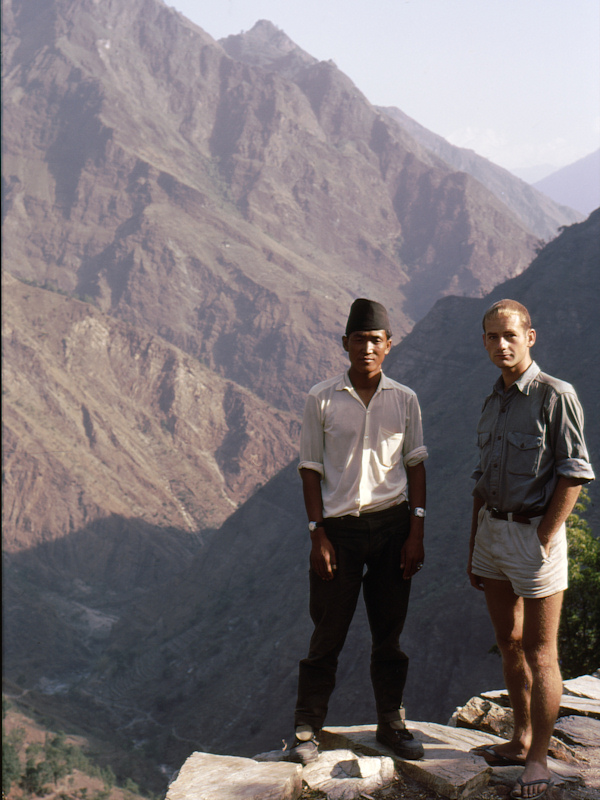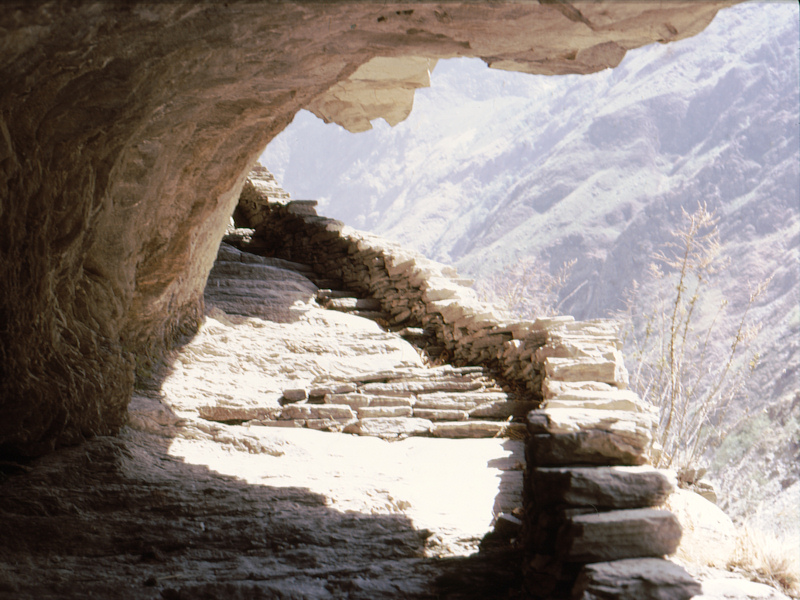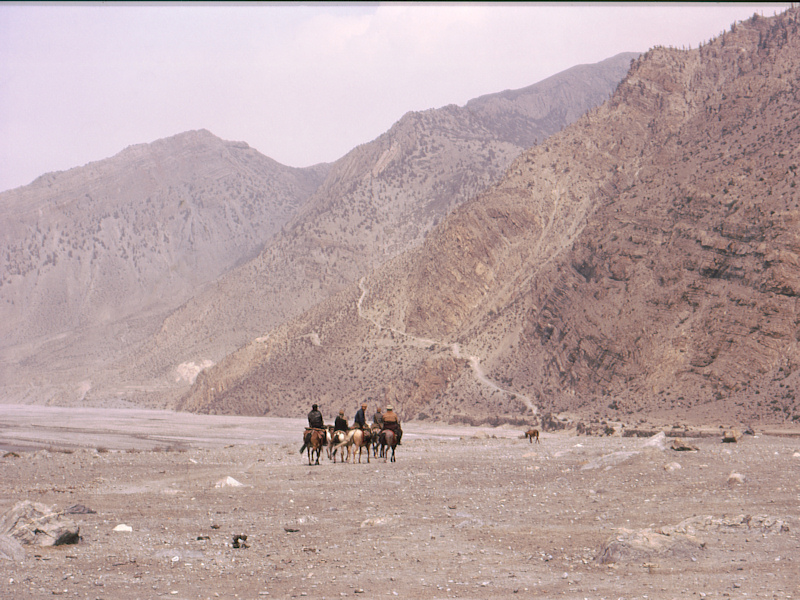
Photo album: "From Pokhara to Jomosom"
Fly over a photo with the mouse to enlarge it
Click on a photo to open it in a new window
We left Yves in Kathmadu (we will not see him again). We catch a plane to Pokhara, on May 4th, early morning. Once arrived we find a hotel near the airstrip. The next day while having breakfast, we meet a man (a sherpa from Namche Bazaar) who tell us he participated in, as a porter, in a French expedition up to Annapurna camp I. He agrees to guide us during our trek to Jomosom for 10 Nepalese rupees per day plus food. Departure is decided to 7 a.m., on Monday May 6th. In the meantime we visit the surroundings and we get also to the bank to change money. An anecdote: I changed a 50-US-dollar travellers' cheque and I was given a "pack" of one hundred 5-nepalese-rupee banknotes. That are very convenient because we are well aware that people, during our trek, cannot easily give back the rest, but they make quite a big pack! A few words about our feet: our infected injuries make wearing the "jungle boots" very painful, therefore we will do the most part of the trek with our "thongs". They are not well suited for walking on mountain paths, too, but they make us suffer less. We will bear the shoes only when we will have to walk in water or on particularly difficult ground.
| On May 10th, since there is no village where we can stop during the
morning, we leave only around 7:40 after breakfast. We continue in the
valley of Kali Gandaki river and we reach, in the afternoon, the village
of Lete (2379 m). On May 11th, we start around 7:45. The valley of Kali Gandaki river has become much wider, now. We arrive, around 13:15, in the village of Tukuche (2593 m). On May 12th, we leave around 8:50, after breakfast. As we are coming back tonight, we have left our rucksacks in the "lodge". The trail is easy and we travel light. We arrive, around 12:10, in Jomosom (2715 m). |
 |
Another view of Phewa lake and the Annapurna range. |
 |
Zooming on the Annapurna range. |
 |
Thatch covered houses in a village during the first day of trek. |
 |
André, on the right, and our guide Mingma (approximate spelling). He is 21 and is a sherpa from Namche Bazaar valley. |
 |
Here, the path has been hollowed out of the rock wall, we can see steps and a low wall in dry stones showing the edge of the path. |
 |
A view of the Annapurna range from the terrace of the house where we will stay overnight, in the village of Lete. The houses, made of stones, are covered with large thin flat stones. |
 |
Another view of Annapurna range. A ladder, made of a tree trunk with carved steps, leads to the terrace, on top of the house. |
 |
Last segment of the trek, between Tukuche and Jomosom. We can see, on the right, the summit of Nilgiri (7061 m). |
 |
The patrol is riding away, in the valley of Kali Gandari river, in direction of Muktinath and of the Tibetan border. |
.
.
.
.
.
.
.